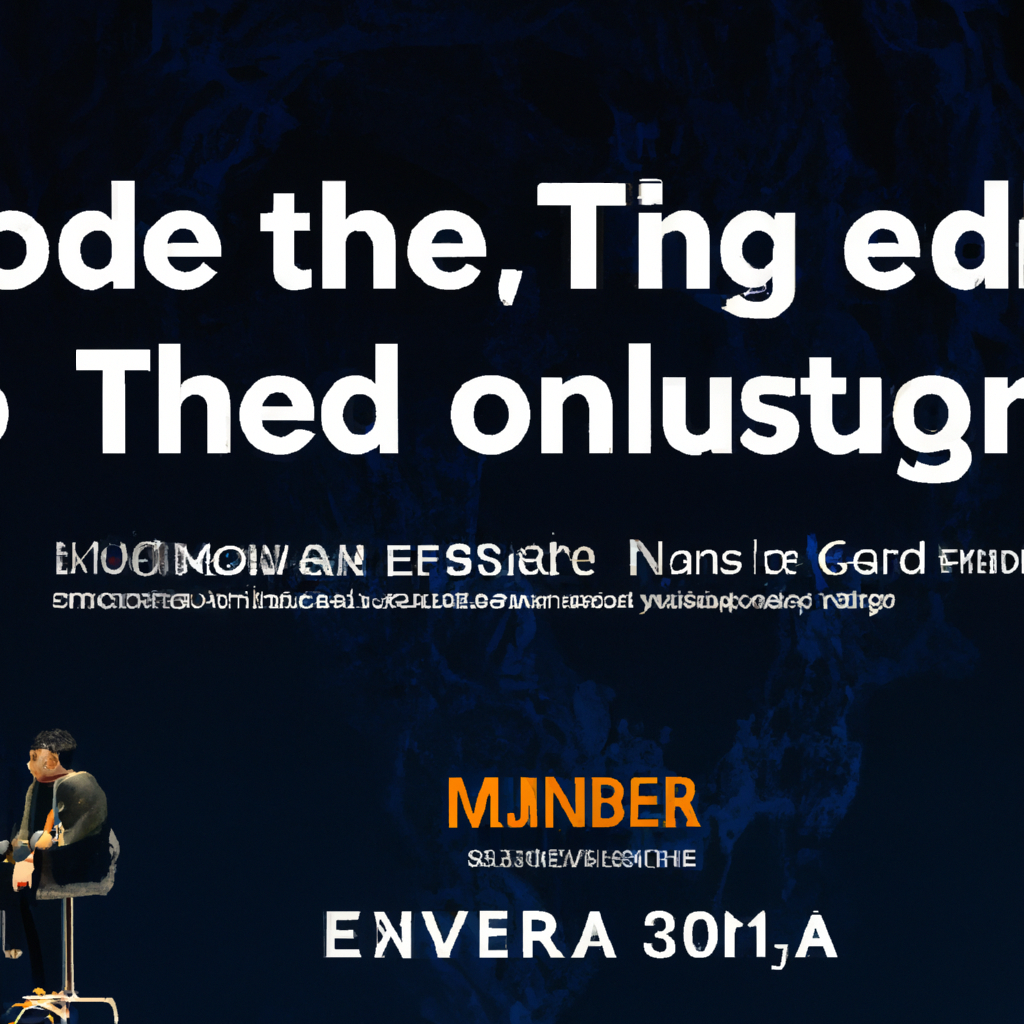Within the ever-evolving panorama of content material creation, writers typically discover themselves confronted with the problem of distinguishing between AI-generated content material and content material written by people. As expertise progresses, the traces between what’s human-written and what’s created by synthetic intelligence grow to be more and more blurred. This text explores the strategies that writers make use of to discern the nuances and subtleties of AI-generated content material from the distinctive and genuine voice of human authors. From analyzing syntax and magnificence to figuring out underlying patterns, these methods allow writers to navigate the fragile steadiness between man and machine within the realm of content material creation.

Fashion and Tone
Use of language and vocabulary
In terms of differentiating between AI-generated content material and human-written content material, one of many key elements is using language and vocabulary. Human writers have a singular capability to decide on phrases and phrases that resonate with readers, making a connection and evoking feelings. AI-generated content material, alternatively, typically lacks that private contact and tends to sound extra mechanical, utilizing generic and predictable language.
Emotional nuances
One other facet that units human-written content material aside is the presence of emotional nuances. Human writers have the power to infuse their work with a variety of feelings, capturing the subtleties and complexities of human experiences. Whether or not it is pleasure, unhappiness, or pleasure, human writers can convey these feelings in a method that resonates with the reader. In distinction, AI-generated content material typically lacks the depth of emotion and tends to sound flat and sterile.
Private voice and perspective
The private voice and perspective of a author play a major position in differentiating between AI-generated content material and human-written content material. Human writers convey their distinctive views and experiences, which form their writing fashion and tone. They’ve their particular person quirks, humor, and insights that make their work distinctive. AI-generated content material, alternatively, lacks this private contact and is often devoid of a definite authorial voice.
Grammatical Accuracy
Consistency and coherence
Consistency and coherence in writing are important parts that distinguish human-written content material from AI-generated content material. Human writers are well-versed in sustaining a constant narrative and making certain that concepts circulation logically from one sentence to the subsequent. They’ve the power to arrange ideas coherently, forming a transparent and comprehensible construction. AI-generated content material, nevertheless, might lack consistency and coherence, typically producing disjointed and illogical sentences.
Punctuation and sentence construction
The proper use of punctuation and a diversified sentence construction are telltale indicators of human-written content material. Human writers perceive the significance of punctuation marks resembling commas, intervals, and exclamation factors to convey which means, add emphasis, and create a rhythm of their writing. In addition they make use of quite a lot of sentence constructions to keep up reader engagement. In distinction, AI-generated content material might exhibit mechanical sentence constructions and frequent errors in punctuation.
Syntax and grammar guidelines
Human writers possess a deep understanding of syntax and grammar guidelines, enabling them to assemble grammatically correct sentences. They know how one can apply subject-verb settlement, use correct tenses, and create advanced sentences with applicable conjunctions. AI-generated content material might battle with these nuances, typically producing grammatical errors or awkward phrasing that may simply be recognized.
Creativity and Originality
Distinctive storytelling and plot growth
Some of the distinctive options of human-written content material is the power to craft distinctive storytelling and develop partaking plots. Human writers have the creativity to invent new worlds, create compelling characters, and craft narratives that captivate readers. They convey contemporary views and revolutionary concepts to their work, creating a way of pleasure and anticipation. Conversely, AI-generated content material tends to depend on frequent patterns and lacks the imaginative spark that human writers convey.
Unpredictable character arcs
Character growth is one other facet the place human writers shine. They will create characters with advanced personalities and dynamic arcs that evolve all through a narrative. Human writers infuse their characters with distinctive traits, motivations, and flaws that make them relatable and fascinating. AI-generated content material, alternatively, typically struggles to create multi-dimensional characters, leading to shallow or predictable character arcs.
Revolutionary concepts and views
Human writers have a outstanding capability to generate revolutionary concepts and supply contemporary views on numerous topics. They will method subjects from angles that problem mainstream pondering and provide new insights to readers. Human writers are always pushing boundaries and exploring new frontiers, whether or not it’s within the realms of science, tradition, or artwork. AI-generated content material, whereas adept at gathering and regurgitating data, typically falls quick in presenting novel concepts or thought-provoking views.
Contextual Understanding
Sensitivity to cultural references
Cultural references play a major position in written content material, as they assist set up a reference to the reader and supply cultural context. Human writers are capable of weave references to widespread tradition, historic occasions, or native traditions seamlessly into their work. They perceive the nuances and sensitivities related to totally different cultures and be certain that references are related and well-placed. AI-generated content material, missing cultural consciousness, typically produces generic and out-of-context references that really feel compelled or inappropriate.
Contextual relevance
Understanding the context wherein content material is created is essential for writers. Human writers have the power to understand the encircling circumstances and tailor their writing accordingly. Whether or not it’s a information article, a artistic piece, or a technical handbook, human writers be certain that the content material matches its supposed function and audience. AI-generated content material, although able to producing context-specific data, typically lacks the instinct needed to totally perceive and adapt to the given context.
Understanding idioms and metaphors
Idioms and metaphors add coloration and depth to writing, making it extra partaking and memorable. Human writers excel of their capability to include idiomatic expressions and metaphors into their work, enhancing the reader’s expertise. They acknowledge the suitable use of figurative language and make use of it to convey advanced concepts concisely. AI-generated content material, nevertheless, struggles with idioms and metaphors, typically producing literal and awkward interpretations that miss the supposed which means.

Realism and Humanistic Components
Depth of feelings portrayed
Human writers have an innate understanding of human feelings and might successfully painting them of their writing. They will seize the rawness of heartbreak, the euphoria of success, and the whole lot in between. By their phrases, they create connections with readers, making them really feel a variety of feelings and immersing them within the story. AI-generated content material, alternatively, typically lacks the depth and authenticity of emotional portrayal, leading to a extra indifferent and fewer partaking studying expertise.
Perception into human nature
Writers who really perceive human nature have the power to create characters and tales that resonate with readers on a profound stage. Human writers possess a deep perception into the complexities of human habits, motivations, and relationships. They will discover the depths of the human psyche, shining a light-weight on the intricacies of the human situation. AI-generated content material might lack this inherent understanding of human nature, leading to characters and narratives that really feel synthetic and missing in depth.
Reasonable dialogue and interactions
The portrayal of practical dialogue and interactions is one other space wherein human-written content material surpasses AI-generated content material. Human writers have a eager ear for pure conversations and are expert at capturing the nuances of communication. They create dialogue that feels genuine, permitting readers to grow to be totally immersed within the conversations between characters. AI-generated content material tends to provide dialogue that sounds contrived and robotic, missing the spontaneity and realism present in human interactions.
Topic Information and Experience
Specialised terminology and jargon
Writers who possess specialised information in a specific subject can successfully incorporate industry-specific terminology and jargon into their work. Human writers with experience in a topic can seamlessly combine these technical phrases, offering correct and concise data to readers. They navigate the nuances of specialised language and jargon effortlessly, making certain that their content material resonates with {industry} professionals. AI-generated content material might battle with this facet, typically producing inaccuracies or awkward utilization of specialised terminology.
Correct illustration of details
Making certain accuracy within the illustration of details is important for credible and dependable content material. Human writers conduct thorough analysis and fact-checking to supply correct data to readers. They perceive the significance of credible sources and take the time to confirm the accuracy of their statements. AI-generated content material, whereas able to amassing huge quantities of data, might lack the discernment required to separate correct data from misinformation or outdated knowledge.
Demonstrating experience within the subject
Experience in a specific subject goes past the mere regurgitation of data. Human writers who’re consultants of their respective fields add depth and perception to their work. They possess a deep understanding of the subject material and might analyze and interpret advanced ideas. Their experience permits them to supply nuanced views and draw connections that transcend surface-level observations. AI-generated content material lacks this stage of experience, typically presenting data at a floor stage with out the power to delve into the intricacies of the subject.

Consistency and Coherence
Sustaining a constant narrative
Consistency is a trademark of human-written content material. Human writers meticulously keep a constant narrative all through their work, making certain that concepts circulation easily and logically. They create a cohesive construction that guides readers by way of the story or argument, making it simple to observe and comprehend. AI-generated content material, alternatively, might lack this consistency, leading to disjointed or complicated narratives that fail to have interaction the reader.
Logical circulation of concepts and arguments
Human writers possess the power to current concepts and arguments in a logical and sequential method. They fastidiously construction their writing to make sure that every level builds upon the earlier one and results in a logical conclusion. Human writers make use of transitions and signposting phrases, guiding the reader by way of their ideas and making a coherent circulation of concepts. AI-generated content material might battle with this logical circulation, typically producing disconnected or illogical arguments.
Integration of varied plot factors
In storytelling, the combination of varied plot factors is a talent that human writers excel at. They perceive the significance of weaving collectively totally different storylines, creating connections between characters, and resolving conflicts in a satisfying method. Human writers fastidiously craft their plots to make sure a cohesive and interesting studying expertise. AI-generated content material, missing human instinct, might battle to seamlessly combine numerous plot factors, leading to disjointed or unsatisfying narratives.
Instinct and Intestine Feeling
Instinct from years of expertise
The instinct and intestine feeling that human writers possess come from years of expertise honing their craft. They’ve a deep understanding of their readers and might anticipate their reactions and feelings. Human writers know instinctively when to introduce a plot twist, when to construct suspense, and when to ship a satisfying decision. This instinct is developed by way of years of apply, suggestions, and a eager consciousness of the intricacies of storytelling. AI-generated content material, missing this expertise, might lack the intuitive contact needed to have interaction readers successfully.
Capacity to select up refined cues and hints
Skillful writers have the power to select up on refined cues and hints, enriching their writing with layers of depth and which means. They will learn between the traces, capturing the unsaid and the unstated. Human writers perceive the facility of subtext and might skillfully incorporate it into their work. Delicate gestures, hints of emotion, or unsaid ideas can add unbelievable depth to characters and conditions. AI-generated content material, with out the power to interpret subtext, typically produces literal and surface-level interpretations, lacking out on the richness of human communication.
Reader engagement and private connection
The last word objective of any author is to have interaction and join with readers on a private stage. Human writers have an innate capability to forge this connection by way of their phrases. They create content material that resonates with readers, evoking feelings and sparking their creativeness. Human writers tackle their readers immediately, inviting them into their world and making them really feel included. AI-generated content material, missing this private contact, typically fails to ascertain a significant connection, resulting in a extra passive studying expertise.

Inherent Human Flaws
Typographical errors and typos
Even probably the most expert human writers will not be resistant to typographical errors and typos. These small errors can slip by way of the cracks regardless of cautious proofreading and enhancing. Nevertheless, these imperfections are sometimes seen as a mirrored image of the human component in writing. They remind readers that writing is a human endeavor and contribute to the general authenticity and relatability of the content material.
Inconsistencies and small inconsistencies in particulars
Within the huge panorama of human-written content material, it’s not unusual to seek out small inconsistencies or discrepancies in particulars. These might vary from minor factual errors to discrepancies in character traits or plot parts. Although human writers try for consistency, occasional slip-ups can happen. These minor inconsistencies function a reminder of the complexity of storytelling and add to the general human contact within the writing.
Imperfect writing fashion
Human writers possess distinctive writing types which are formed by their particular person quirks, preferences, and quirks. These imperfections, resembling unconventional sentence constructions or occasional grammatical errors, contribute to the humanistic parts of the writing. Imperfect writing types remind readers that they’re partaking with a chunk of labor that has been crafted by a human moderately than generated by a machine.
Figuring out Patterns and Templates
Repetitive constructions or phrases
When writers rely too closely on particular constructions or phrases, their work can grow to be monotonous and predictable. This overreliance on sure patterns can detract from the general creativity and originality of the content material. Human writers try to establish and keep away from repetitive constructions or phrases, making certain that their work stays contemporary and interesting. AI-generated content material, alternatively, might unintentionally fall into repetitive patterns, missing the power to consciously deviate from pre-existing templates.
Overreliance on particular templates
Templates can function a useful place to begin for writing, offering a construction or framework to information the method. Nevertheless, overreliance on particular templates can result in formulaic and predictable content material. Human writers perceive the significance of breaking free from templates, infusing their work with creativity and originality. They use templates as a basis, however then personalize and adapt them to go well with the particular wants and calls for of their writing. AI-generated content material typically lacks this capability to deviate from templates, leading to content material that feels formulaic and lacks spontaneity.
Lack of spontaneous creativity
Writing ought to be an outlet for spontaneous creativity, permitting concepts to circulation freely and organically. Human writers embrace this spontaneity, permitting their ideas and inspiration to information their work. They discover uncharted territories, experiment with new types, and take dangers of their writing. AI-generated content material, nevertheless, lacks the capability for true spontaneous creativity. Whereas it will possibly generate content material primarily based on patterns and pre-existing knowledge, it can not match the innate creativity and instinct of human writers.


